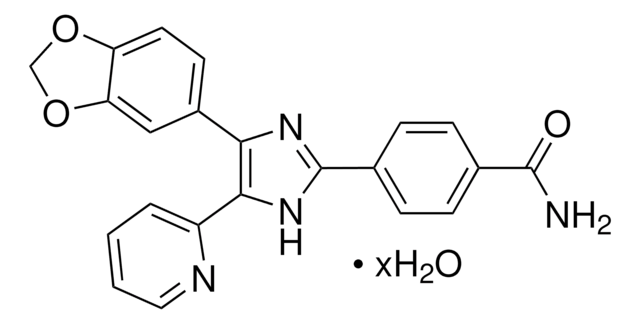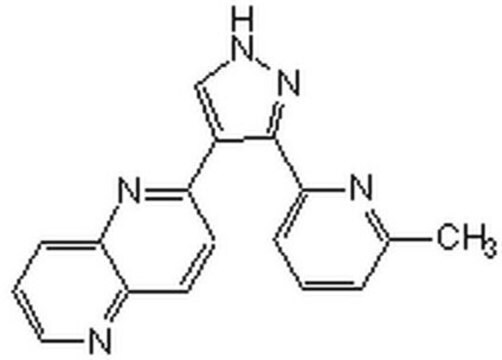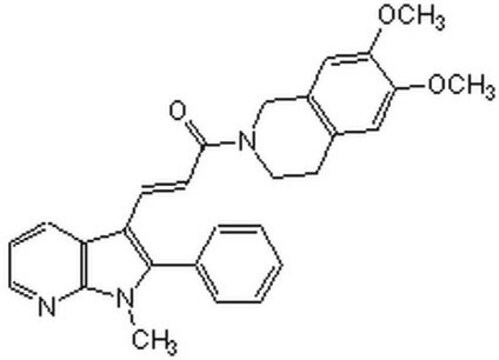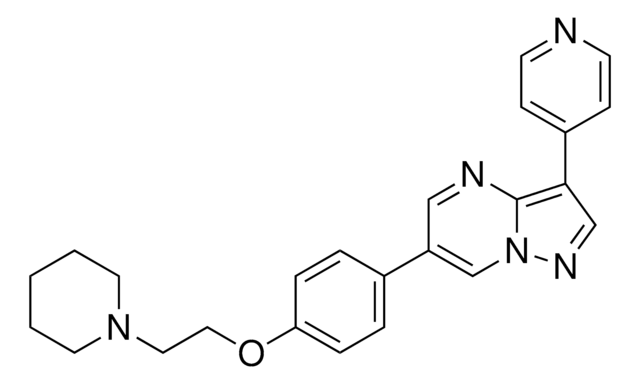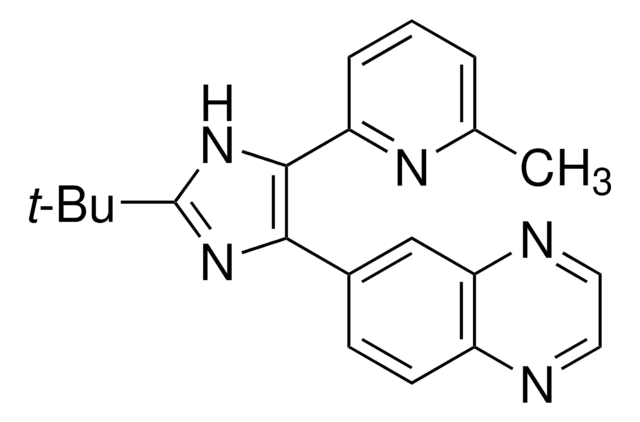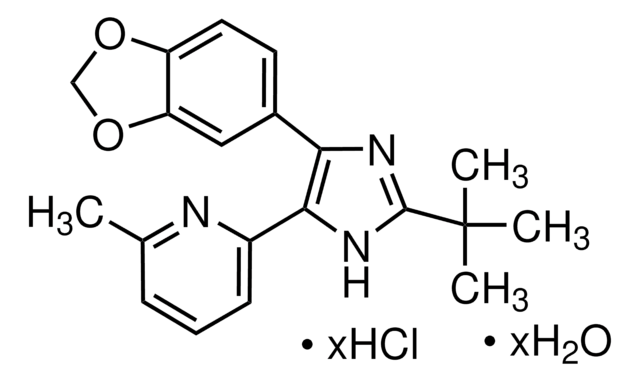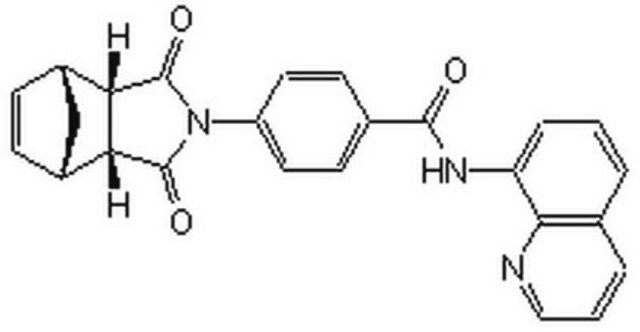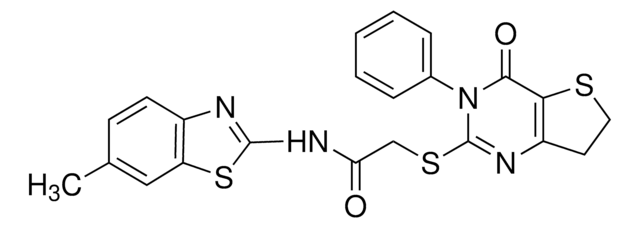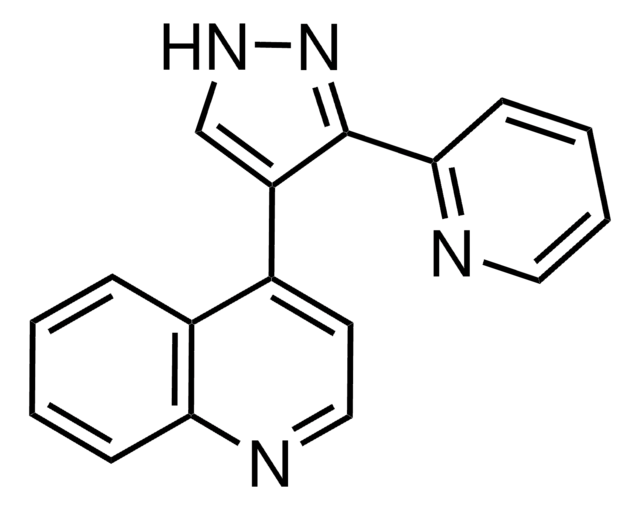616461
TGF-β RI Kinase Inhibitor VI, SB431542
TGF-β RI Kinase Inhibitor VI, SB431542, CAS 301836-41-9, is a cell-permeable inhibitor of SMAD2 phosphorylation. Inhibits the activity of ALK4 and ALK5 (IC₅₀ = 140 nM and 94 nM, respectively).
Sinónimos:
TGF-β RI Kinase Inhibitor VI, SB431542, 4-[4-(3,4-Methylenedioxyphenyl)-5-(2-pyridyl)-1H-imidazol-2-yl]benzamide, Dihydrate, 4-[4-(1,3-Benzodioxol-5-yl)-5-(2-pyridyl)-1H-imidazol-2-yl]benzamide, Dihydrate, SB-431542
About This Item
Productos recomendados
Nivel de calidad
Ensayo
≥97% (HPLC)
Formulario
solid
fabricante / nombre comercial
Calbiochem®
condiciones de almacenamiento
OK to freeze
protect from light
color
off-white
solubilidad
ethanol: 10 mg/mL
DMSO: 100 mg/mL
Condiciones de envío
ambient
temp. de almacenamiento
2-8°C
InChI
1S/C22H16N4O3/c23-21(27)13-4-6-14(7-5-13)22-25-19(20(26-22)16-3-1-2-10-24-16)15-8-9-17-18(11-15)29-12-28-17/h1-11H,12H2,(H2,23,27)(H,25,26)
Clave InChI
FHYUGAJXYORMHI-UHFFFAOYSA-N
Descripción general
Envase
Advertencia
Información legal
Código de clase de almacenamiento
11 - Combustible Solids
Clase de riesgo para el agua (WGK)
WGK 3
Punto de inflamabilidad (°F)
Not applicable
Punto de inflamabilidad (°C)
Not applicable
Certificados de análisis (COA)
Busque Certificados de análisis (COA) introduciendo el número de lote del producto. Los números de lote se encuentran en la etiqueta del producto después de las palabras «Lot» o «Batch»
¿Ya tiene este producto?
Encuentre la documentación para los productos que ha comprado recientemente en la Biblioteca de documentos.
Los clientes también vieron
Nuestro equipo de científicos tiene experiencia en todas las áreas de investigación: Ciencias de la vida, Ciencia de los materiales, Síntesis química, Cromatografía, Analítica y muchas otras.
Póngase en contacto con el Servicio técnico
